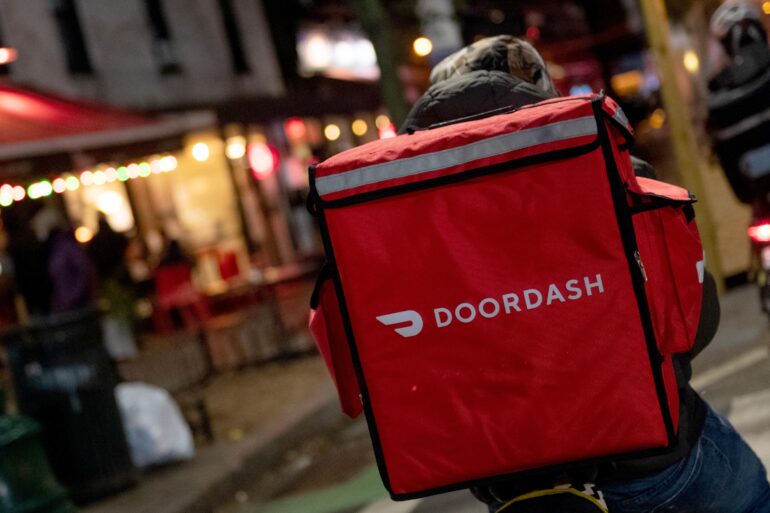TL;DR:
- DoorDash utilizes generative AI to enhance customer assistance and provide personalized recommendations based on individual preferences.
- Generative AI aids DoorDash in operations by extracting nutrition information and balancing tech and development responsibilities.
- Uber’s integration of AI through the Uber AI division improves route planning, demand forecasting, and customer communication.
- Uber AI’s collaboration with AI innovators expands data collection and decision-making capabilities.
- Initial adoption costs pose challenges, but DoorDash and Uber are strategically positioned for AI integration.
- Regulatory considerations and the need for data protection shape the future of AI in the market.
- Investing in AI proves wise for Uber and DoorDash, offering potential long-term profitability.
Main AI News:
The disruptive nature of DoorDash and the continuous integration of new technologies by Uber have propelled both companies to the forefront of their respective industries. As they forge ahead, exploring the possibilities of generative AI could prove highly advantageous for their investors. Let’s delve into how this cutting-edge technology holds the potential to revolutionize these companies’ operations.
DoorDash, with its firm commitment to innovation, recognizes the vast potential of generative AI across various domains. In the realm of customer assistance, DoorDash Engineering leverages machine learning algorithms to simplify and enhance customer interactions with its app and related tools. By harnessing the power of interactive discovery, personalized recommendations based on individual preferences become more accurate and valuable, surpassing mere memorization and instead drawing on previous inputs to cater to each customer’s unique needs.
In the realm of operations, DoorDash anticipates two key areas where generative AI can bring about significant advancements. First, AI-powered tools can efficiently extract nutrition information from menu items or shopping lists, providing customers with additional information without the need for labor-intensive transcription costs. Second, generative coding and testing can assist in striking a harmonious balance between technological advancements and app innovation, facilitating seamless integration and development.
By embarking on these initiatives, DoorDash could potentially transform its business landscape through the adoption of AI, without incurring the exorbitant expenses typically associated with major changes in presentation or operation.
Similarly, Uber, renowned for its focus on cutting-edge technologies, is poised to leverage AI through its dedicated division, Uber AI. With a wealth of experience in advanced artificial intelligence research and platforms, Uber is primed to capitalize on the widespread adoption of AI technologies. The company already employs AI for route planning, demand forecasting, and customer communication, continually enhancing the overall experience for passengers and food delivery recipients alike.
Uber AI takes its commitment further by fostering collaborations with other leading artificial intelligence innovators, further solidifying its position as a thought leader and authoritative figure in the market. Through the development of generative networks, Uber expands its capacity to collect and utilize vast amounts of data in decision-making processes, a distinct competitive advantage when it comes to effectively utilizing available data—a common challenge in the realm of big data.
However, the adoption of emerging technologies, including AI, does not come without its challenges. A significant hurdle lies in the initial adoption costs, which can pose financial strains on companies. DoorDash, through its ongoing efforts to integrate AI into its product, aims to move swiftly toward overall profitability, despite the potential costs involved. In contrast, Uber’s substantial investment in AI positions it favorably as a leader in the field, offering a strong advantage for future endeavors.
Furthermore, both companies must navigate the complex landscape of creating laws and requirements that safeguard consumer data and shape the development of generative AI. These regulatory considerations are essential for any company seeking to harness the potential benefits of this transformative technology. As the future of artificial intelligence unfolds, its impact on food delivery stocks cannot be understated, and DoorDash and Uber, with their strategic positioning and ongoing transition to AI integration, are well-positioned to excel in both consumer experiences and backend development.
Conclusion:
The integration of generative AI technology by DoorDash and Uber showcases their commitment to innovation and enhancing customer experiences. By harnessing the power of AI, both companies can streamline operations, provide personalized recommendations, and reduce costs associated with development. However, navigating regulatory challenges and protecting consumer data remain essential. Overall, embracing AI positions Uber and DoorDash favorably in the market, making them attractive investment options for long-term success.

